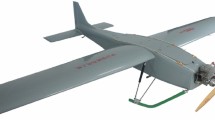Abstract
In order to improve the adaptability and robustness of gliding guidance under complex environments and multiple constraints, this study proposes an intelligent gliding guidance strategy based on the optimal guidance, predictor-corrector technique, and deep reinforcement learning (DRL). Longitudinal optimal guidance was introduced to satisfy the altitude and velocity inclination constraints, and lateral maneuvering was used to control the terminal velocity magnitude and position. The maneuvering amplitude was calculated by the analytical prediction of the terminal velocity, and the direction was learned and determined by the deep Q-learning network (DQN). In the direction decision model construction, the state and action spaces were designed based on the flight status and maneuvering direction, and a reward function was proposed using the terminal predicted state and terminal constraints. For DQN training, initial data samples were generated based on the heading-error corridor, and the experience replay pool was managed according to the terminal guidance error. The simulation results show that the intelligent gliding guidance strategy can satisfy various terminal constraints with high precision and ensure adaptability and robustness under large deviations.
Similar content being viewed by others
References
Yu J L, Dong X W, Li Q D, et al. Cooperative guidance strategy for multiple hypersonic gliding vehicles system. Chin J Aeronaut, 2020, 33: 990–1005
Lahanier H, Serre L. Trajectory and guidance scheme design for free flight test of hypersonic vehicle. In: Proceedings of the AIAA Guidance, Navigation, and Control Conference, 2017
Joshi A, Sivan K, Amma S S. Predictor-corrector reentry guidance algorithm with path constraints for atmospheric entry vehicles. J Guid Control Dyn, 2007, 30: 1307–1318
Zhu J, Zhang S. Adaptive optimal gliding guidance independent of QEGC. Aerospace Sci Tech, 2017, 71: 373–381
Mnih V, Kavukcuoglu K, Silver D, et al. Human-level control through deep reinforcement learning. Nature, 2015, 518: 529–533
Kober J, Bagnell J A, Peters J. Reinforcement learning in robotics: a survey. Int J Robot Res, 2013, 32: 1238–1274
Bhopale P, Kazi F, Singh N. Reinforcement learning based obstacle avoidance for autonomous underwater vehicle. J Mar Sci Appl, 2019, 18: 228–238
Junell J L, van Kampen E J, de Visser C C, et al. Reinforcement learning applied to a quadrotor guidance law in autonomous flight. In: Proceedings of AIAA Guidance, Navigation, and Control Conference, 2015
Gaudet B, Furfaro R. Missile homing-phase guidance law design using reinforcement learning. In: Proceedings of AIAA Guidance, Navigation, and Control Conference, 2012
Luo Z, Li X S, Wang L X, et al. Multiconstrained gliding guidance based on optimal and reinforcement learning method. Math Problems Eng, 2021, 2021: 1–12
Yang J, You X, Wu G, et al. Application of reinforcement learning in UAV cluster task scheduling. Future Generation Comput Syst, 2019, 95: 140–148
Chai R, Tsourdos A, Savvaris A, et al. Six-DOF spacecraft optimal trajectory planning and real-time attitude control: a deep neural network-based approach. IEEE Trans Neural Netw Learn Syst, 2019, 31: 5005–5013
Hovell K, Ulrich S. On deep reinforcement learning for spacecraft guidance. In: Proceedings of AIAA Scitech 2020 Forum, 2020
Hovell K, Ulrich S. Deep reinforcement learning for spacecraft proximity operations guidance. J Spacecraft Rockets, 2021, 58: 254–264
Woodbury T D, Dunn C, Valasek J. Autonomous soaring using reinforcement learning for trajectory generation. In: Proceedings of the 52nd Aerospace Sciences Meeting, 2014
Julian K D, Kochenderfer M J. Distributed wildfire surveillance with autonomous aircraft using deep reinforcement learning. J Guid Control Dyn, 2019, 42: 1768–1778
Gaudeta B, Furfaroa R, Linares R. Reinforcement meta-learning for angle-only intercept guidance of maneuvering targets. In: Proceedings of the AIAA SciTech 2020 Forum, 2020
Gao W, Zhou X, Pan M, et al. Acceleration control strategy for aero-engines based on model-free deep reinforcement learning method. Aerospace Sci Tech, 2022, 120: 107248
Zhu J, Liu L, Tang G, et al. Highly constrained optimal gliding guidance. Proc Inst Mech Eng Part G-J Aerospace Eng, 2015, 229: 2321–2335
Phillips T H. A common aero vehicle (CAV) model, description, and employment guide. Schafer Corp AFRL and AFSPC, 2003, 27: 1–12
Author information
Authors and Affiliations
Corresponding author
Rights and permissions
About this article
Cite this article
Zhu, J., Zhang, H., Zhao, S. et al. Multi-constrained intelligent gliding guidance via optimal control and DQN. Sci. China Inf. Sci. 66, 132202 (2023). https://doi.org/10.1007/s11432-022-3543-4
Received:
Revised:
Accepted:
Published:
DOI: https://doi.org/10.1007/s11432-022-3543-4




